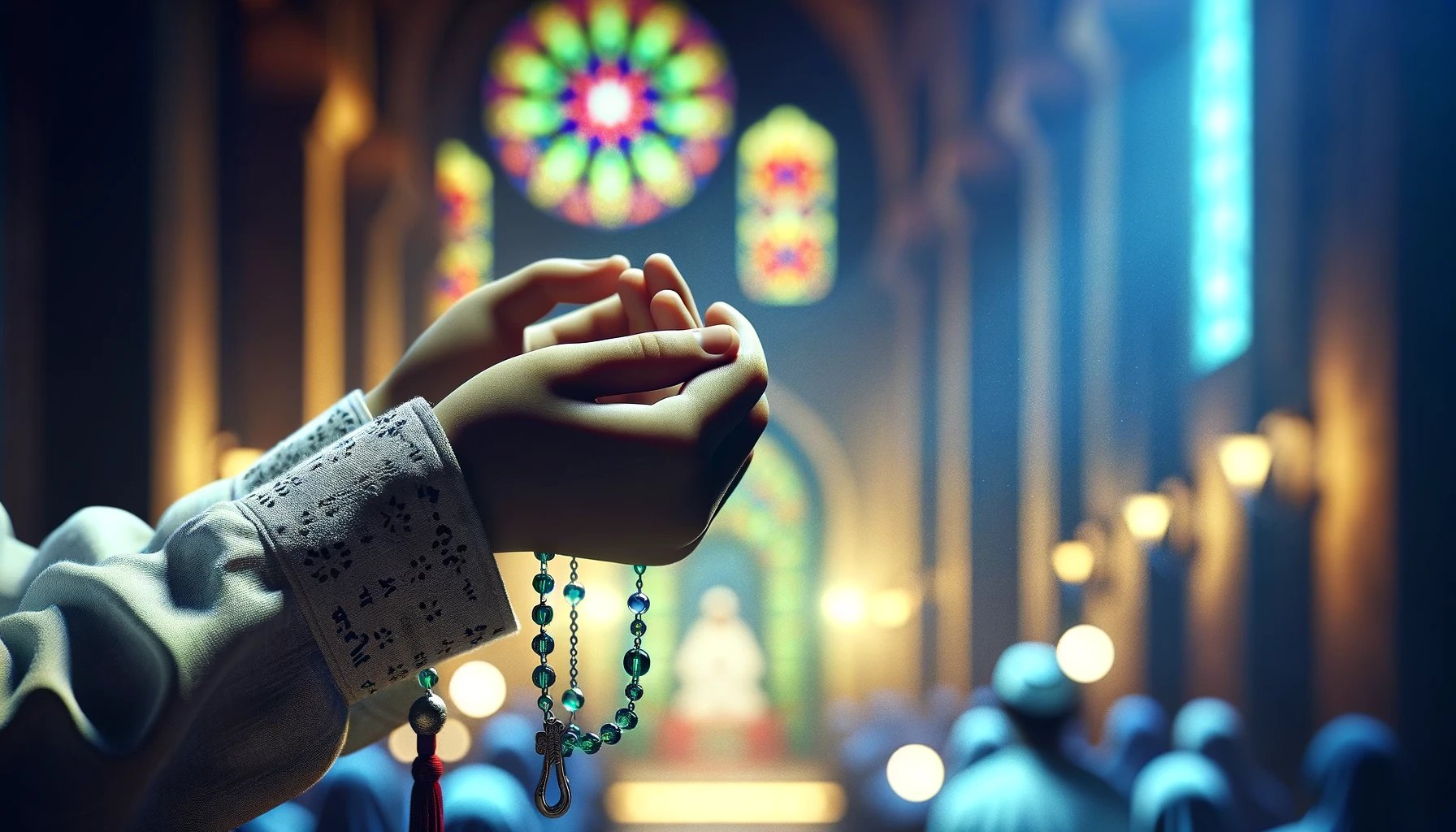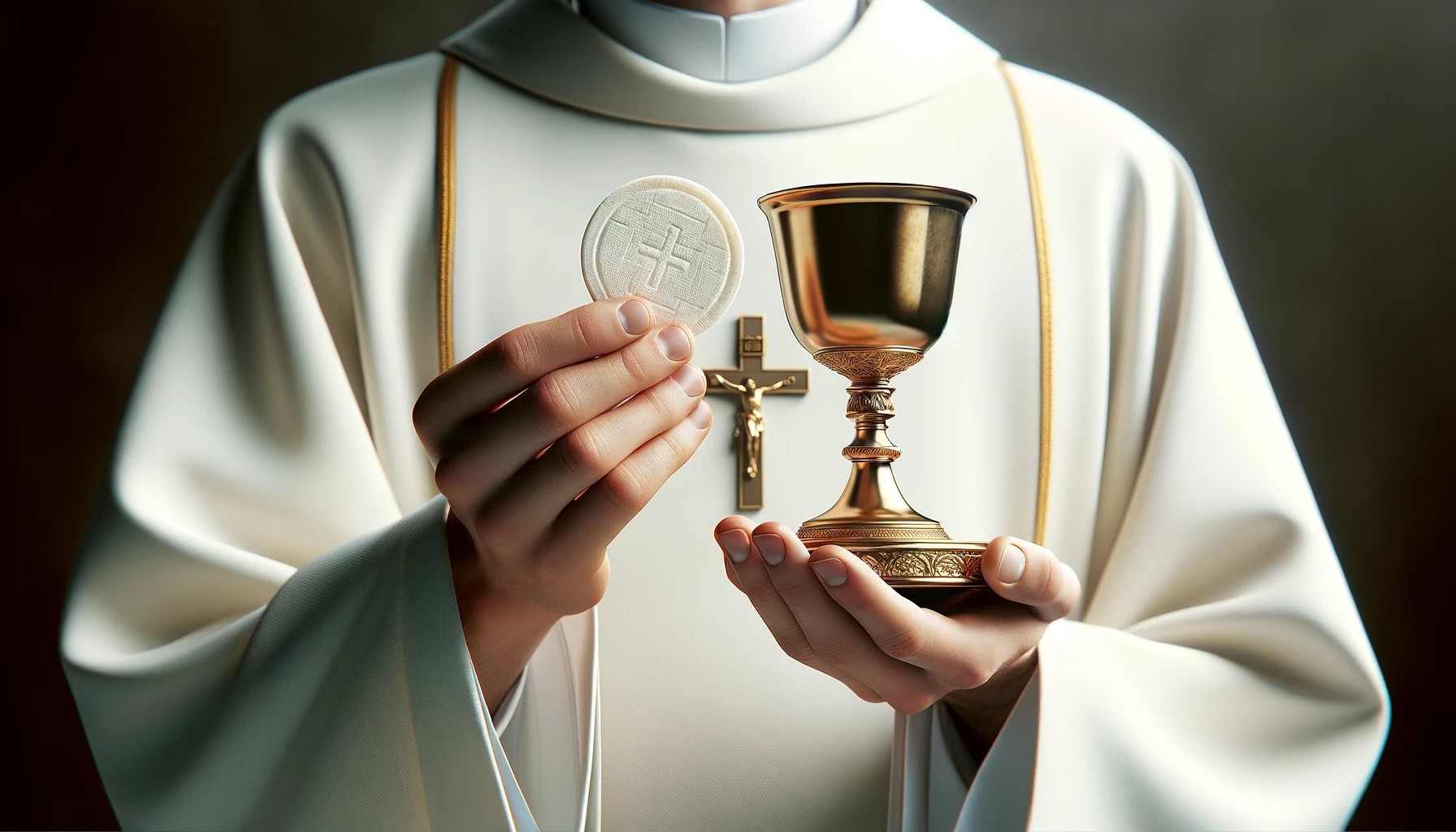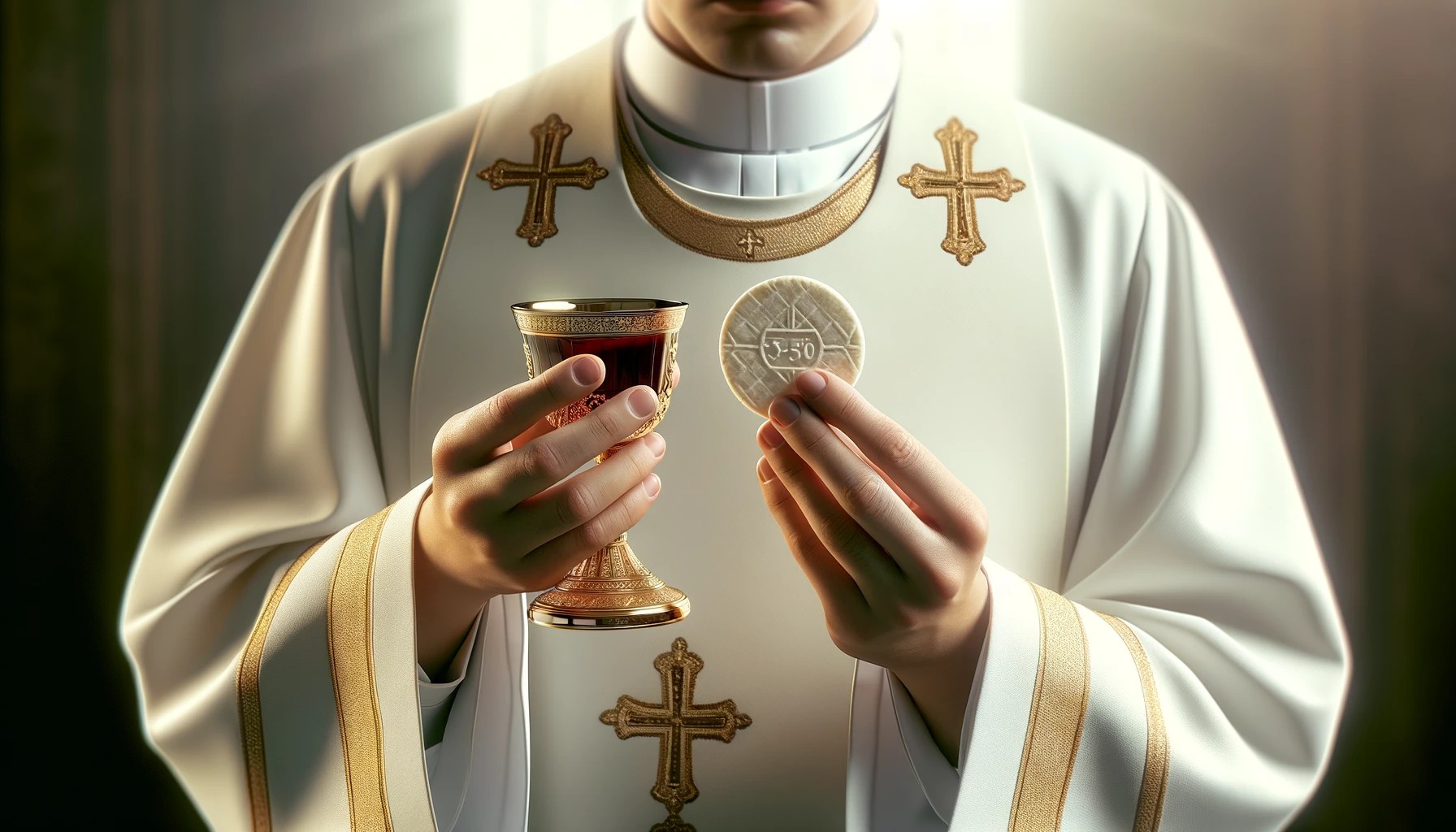Home>Theology and Spirituality>How To Minister Holy Communion


Theology and Spirituality
How To Minister Holy Communion
Published: February 25, 2024
Jason DeRose, Managing Editor at Christian.net, uses his expertise in religion and journalism to deepen understanding of faith's societal impacts. His editorial leadership, coupled with a strong academic background, enriches the platform’s diverse content, earning him recognition in both journalism and religious circles.
Learn the theology and spirituality behind ministering Holy Communion. Discover the significance and practices of this sacred ritual. Gain insights and guidance for a meaningful experience.
(Many of the links in this article redirect to a specific reviewed product. Your purchase of these products through affiliate links helps to generate commission for Christian.net, at no extra cost. Learn more)
Table of Contents
Introduction
The Holy Communion, also known as the Eucharist, is a sacred and central ritual in many Christian traditions. It holds deep spiritual significance and is a symbolic reenactment of the Last Supper, where Jesus shared bread and wine with his disciples. This act of sharing in the body and blood of Christ is a profound expression of faith and unity within the Christian community.
The practice of Holy Communion varies among different denominations, but its essence remains rooted in the teachings of Jesus Christ. It serves as a powerful reminder of the sacrificial love and redemptive grace that Christians believe Jesus offered to humanity through his crucifixion and resurrection.
Participating in the Holy Communion is not merely a religious custom; it is a deeply spiritual experience that fosters a sense of connection with God and fellow believers. The act of partaking in the bread and wine symbolizes a spiritual nourishment and a reaffirmation of one's faith in the life, death, and resurrection of Jesus Christ.
As we delve into the intricacies of ministering the Holy Communion, it is essential to approach this sacred act with reverence, understanding, and a heart full of devotion. Whether you are a clergy member, a lay minister, or a devoted Christian seeking a deeper understanding of this sacred ritual, the journey of ministering the Holy Communion is a profound and enriching experience that calls for both spiritual preparation and practical knowledge.
Read more: How To Wish Holy Communion
Understanding the Holy Communion
The Holy Communion, also known as the Eucharist, holds a central place in Christian worship and theology. It is a symbolic reenactment of the Last Supper, a pivotal event in the life of Jesus Christ. During the Last Supper, Jesus shared bread and wine with his disciples, instructing them to partake in remembrance of him. This act of sharing in the body and blood of Christ carries profound spiritual significance for Christians around the world.
At its core, the Holy Communion serves as a tangible expression of the sacrificial love and redemptive grace that Christians believe Jesus offered to humanity through his crucifixion and resurrection. The bread symbolizes the body of Christ, broken for the salvation of humanity, while the wine represents the blood shed for the forgiveness of sins. This act of partaking in the elements is a solemn and reverent acknowledgment of the foundational beliefs of the Christian faith.
The Holy Communion is not merely a symbolic ritual; it is a deeply spiritual experience that fosters a sense of unity and communion within the Christian community. It serves as a reminder of the profound connection between believers and their faith in Jesus Christ. Through the act of partaking in the bread and wine, Christians reaffirm their commitment to the teachings and example of Christ, seeking spiritual nourishment and renewal in their faith journey.
The theological underpinnings of the Holy Communion vary among Christian denominations, but the central themes of remembrance, sacrifice, and unity remain consistent. Whether celebrated as a sacrament, ordinance, or memorial, the Holy Communion stands as a unifying practice that transcends denominational boundaries, bringing believers together in a shared expression of faith and devotion.
In essence, understanding the Holy Communion involves embracing its multifaceted significance as a sacred ritual, a spiritual nourishment, and a symbol of unity within the body of Christ. It is a profound expression of faith and a tangible reminder of the enduring impact of Jesus Christ's life, death, and resurrection on the lives of believers throughout history.
Preparing for the Holy Communion
Preparing for the Holy Communion is a sacred and meticulous process that involves both spiritual and practical considerations. Whether you are a clergy member, a lay minister, or an individual preparing to partake in the Holy Communion, the significance of this preparation cannot be overstated. It is a time of reverence, introspection, and deliberate readiness to engage in a deeply meaningful act of worship and spiritual connection.
Spiritual Preparation
At the heart of preparing for the Holy Communion is spiritual readiness. This involves a period of reflection, prayer, and self-examination. For clergy members and lay ministers, it is essential to approach the preparation with a sense of humility and devotion, recognizing the sacred responsibility of facilitating this profound ritual for the congregation. This may involve seeking spiritual guidance, studying relevant scriptures, and engaging in personal prayer to cultivate a mindset of reverence and spiritual sensitivity.
For individuals preparing to partake in the Holy Communion, spiritual readiness entails introspection and repentance. It is a time to examine one's heart, seeking reconciliation and forgiveness where needed. This process of self-examination aligns with the biblical injunction to approach the Communion table with a clear conscience and a contrite heart, acknowledging the significance of the act and its implications for personal faith and spiritual growth.
Practical Preparation
In addition to spiritual readiness, practical preparations are integral to the seamless and reverent administration of the Holy Communion. This may involve ensuring the availability of the necessary elements, such as unleavened bread and wine (or non-alcoholic alternatives), as well as the appropriate vessels for their presentation. Clergy members and lay ministers may also need to coordinate with church staff or volunteers to set up the Communion table, arrange seating, and communicate any logistical details to the congregation.
For individuals preparing to partake in the Holy Communion, practical readiness may involve familiarizing oneself with the order of the service, understanding the significance of the elements, and being mindful of the solemnity of the occasion. This may also include observing any prescribed fasting or abstinence practices leading up to the Communion service, as guided by specific denominational traditions or personal convictions.
In essence, preparing for the Holy Communion encompasses a harmonious blend of spiritual and practical readiness. It is a time of intentional reflection, humble preparation, and logistical coordination aimed at fostering a reverent and meaningful experience for all participants. By embracing the significance of this preparation, both clergy and congregants can approach the Holy Communion with a deep sense of reverence, unity, and spiritual anticipation.
Read more: How To Take The Holy Communion
Conducting the Holy Communion Service
Conducting the Holy Communion service is a sacred responsibility that requires meticulous attention to detail, reverence, and a deep understanding of the ritual's significance. Whether leading the service as a clergy member or overseeing the logistics as a lay minister, the process of conducting the Holy Communion demands a blend of spiritual leadership, organizational proficiency, and a heart attuned to the spiritual needs of the congregation.
Pre-Service Preparations
Prior to the commencement of the Holy Communion service, it is essential to ensure that all logistical and ceremonial elements are in place. This includes setting up the Communion table with the appropriate linens, vessels, and elements of bread and wine. Clergy members and lay ministers may also coordinate with assisting individuals to ensure a seamless flow of the service, from the distribution of elements to the guidance of congregants during the Communion procession.
Scriptural Readings and Reflection
Central to the Holy Communion service is the inclusion of relevant scriptural readings and reflections that underscore the significance of the ritual. This may involve the recitation of passages from the Gospels that recount the Last Supper and the instructions given by Jesus to his disciples regarding the sharing of bread and wine in remembrance of him. These scriptural readings serve to contextualize the Communion service within the narrative of Christ's sacrificial love and the call to unity within the body of believers.
Communion Liturgy and Prayers
The Communion liturgy forms the heart of the service, guiding the congregation through a sequence of prayers, invocations, and responses that lead to the consecration and sharing of the elements. Clergy members often lead these liturgical components, offering prayers of thanksgiving, consecration, and intercession, inviting the congregation to participate in a collective expression of faith and spiritual communion.
Read more: How To Administer Holy Communion To The Sick
Distribution of the Elements
As the Communion liturgy unfolds, the distribution of the bread and wine (or non-alcoholic alternatives) takes center stage. Clergy members or designated individuals carefully present the elements to congregants, often accompanied by solemn words of blessing and invitation to partake. This phase of the service requires a gentle and reverent demeanor, as it represents the moment of intimate connection with the symbolic body and blood of Christ.
Post-Communion Reflection and Benediction
Following the partaking of the elements, the service may conclude with a period of post-Communion reflection, during which congregants are encouraged to engage in personal prayer, meditation, or silent contemplation. This reflective interlude allows for a deeper internalization of the spiritual significance of the Communion experience. The service culminates with a benediction, imparting a final blessing and sending forth the congregation with a sense of spiritual renewal and unity.
In essence, conducting the Holy Communion service demands a harmonious orchestration of ceremonial precision, spiritual guidance, and pastoral care. It is a sacred journey that invites both leaders and participants to embrace the profound significance of the ritual, fostering a collective experience of spiritual nourishment, unity, and reverence within the Christian community.
Administering the Holy Communion
Administering the Holy Communion is a sacred and solemn responsibility that requires a deep reverence for the spiritual significance of the ritual. Whether undertaken by clergy members or designated lay ministers, the act of administering the elements of bread and wine (or non-alcoholic alternatives) demands a delicate balance of ceremonial precision, pastoral sensitivity, and a profound understanding of the symbolic nature of the Communion.
The process of administering the Holy Communion typically begins with the careful presentation of the consecrated elements to the congregation. This may involve clergy members or appointed individuals approaching the Communion table with a sense of reverence, lifting the bread and wine as symbols of Christ's body and blood. The manner in which the elements are handled reflects a deep respect for their sacred significance and serves to convey the spiritual gravity of the moment.
As the congregation approaches to receive the elements, the administering individuals play a pivotal role in guiding the process with grace and attentiveness. Whether offering the bread and wine directly to each participant or overseeing a self-serve arrangement, the administering individuals embody a spirit of humility and service, recognizing the profound impact of the Communion experience on the spiritual lives of those partaking.
Throughout the administration of the elements, it is essential to maintain an atmosphere of reverence and contemplation, allowing each participant to engage in a personal moment of communion with God. This may involve offering gentle words of blessing or encouragement as the elements are received, fostering a sense of spiritual connection and unity within the congregation.
In instances where the Holy Communion is administered to individuals who are unable to physically partake, such as the sick or homebound, clergy members or designated ministers may conduct special visitations to facilitate the sharing of the elements. This extension of the Communion experience underscores the inclusive and nurturing nature of the ritual, ensuring that all members of the faith community are embraced by its spiritual significance.
Ultimately, the act of administering the Holy Communion is a profound expression of pastoral care, spiritual nourishment, and communal unity. It embodies the sacred responsibility of facilitating a deeply meaningful encounter with the presence of Christ, inviting participants to partake in a transformative experience of faith, remembrance, and spiritual communion.
Conclusion
In conclusion, the ministering of the Holy Communion is a deeply enriching and spiritually significant practice that embodies the core tenets of the Christian faith. From understanding the profound symbolism of the elements to preparing for the sacred ritual with reverence and diligence, every aspect of the Holy Communion journey serves to foster a deeper connection with God and fellow believers.
The Holy Communion stands as a timeless testament to the sacrificial love and redemptive grace of Jesus Christ, inviting believers to partake in a tangible expression of their faith and unity within the body of Christ. Whether conducted within the context of a traditional church service or in more intimate settings, the administration of the Communion elements carries a profound sense of spiritual significance and communal bonding.
As we reflect on the intricate process of conducting and administering the Holy Communion, it becomes evident that this sacred ritual transcends mere tradition; it is a transformative experience that calls for both spiritual sensitivity and practical attentiveness. The careful orchestration of the Communion service, the reverent presentation of the elements, and the pastoral care extended to participants all contribute to a collective journey of spiritual nourishment and unity.
Furthermore, the inclusivity of the Holy Communion extends beyond the physical act of partaking in the elements. It encompasses a broader sense of spiritual communion, embracing individuals of diverse backgrounds, circumstances, and experiences. The ministering of the Holy Communion serves as a unifying force that transcends denominational boundaries, inviting all who profess faith in Christ to partake in a shared expression of remembrance, gratitude, and spiritual renewal.
In essence, the ministering of the Holy Communion is a sacred privilege and a profound responsibility. It calls upon clergy members, lay ministers, and congregants alike to approach this ritual with humility, reverence, and a deep appreciation for its spiritual significance. Through the careful preparation, thoughtful conduct, and reverent administration of the Communion, believers are invited to partake in a transformative encounter with the living presence of Christ, fostering a sense of spiritual nourishment, unity, and communal devotion within the body of believers.
As we embark on this journey of ministering the Holy Communion, may we be guided by a spirit of reverence, compassion, and unwavering faith, recognizing the enduring impact of this sacred ritual on the lives and spiritual journeys of believers throughout history.













